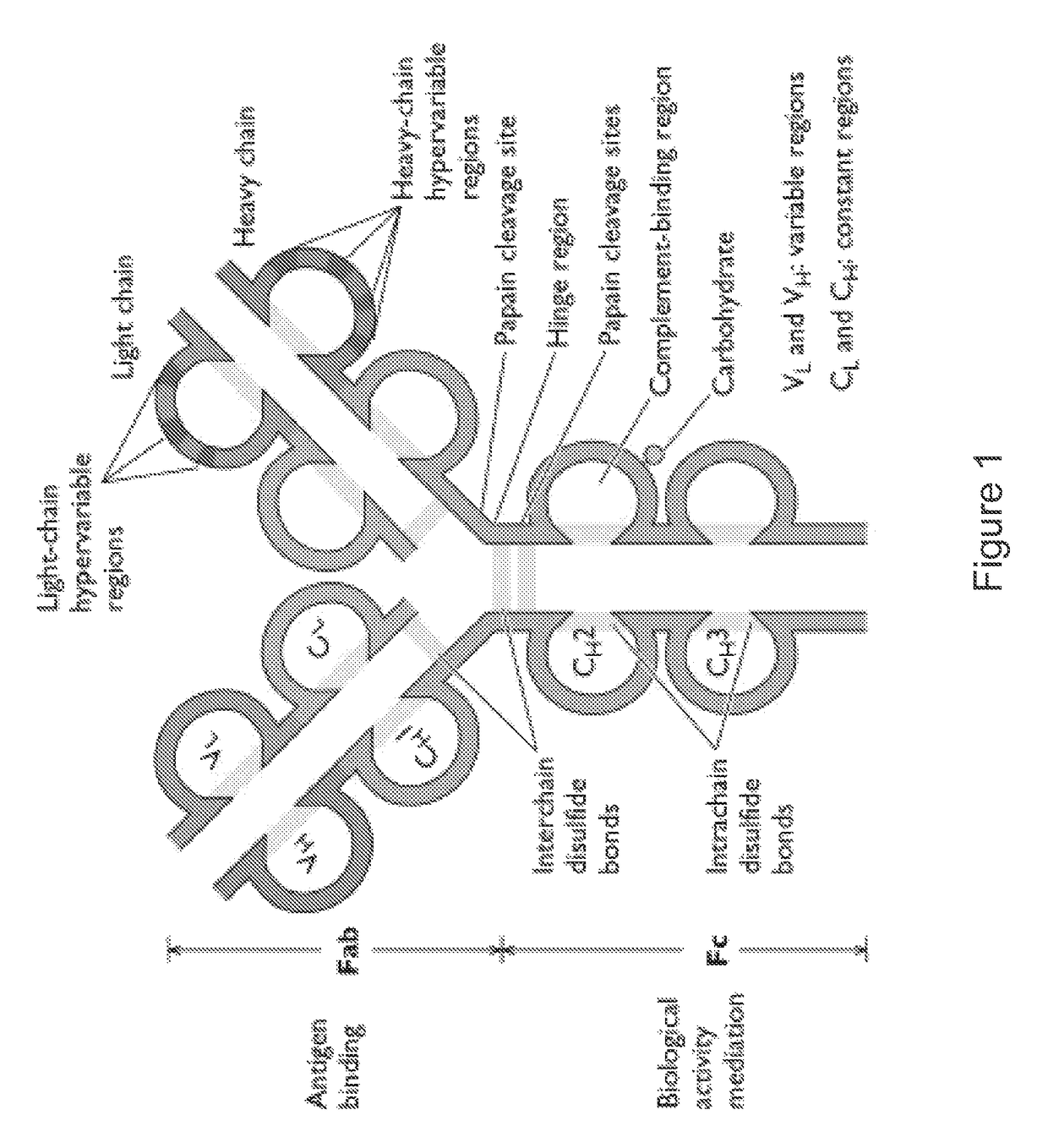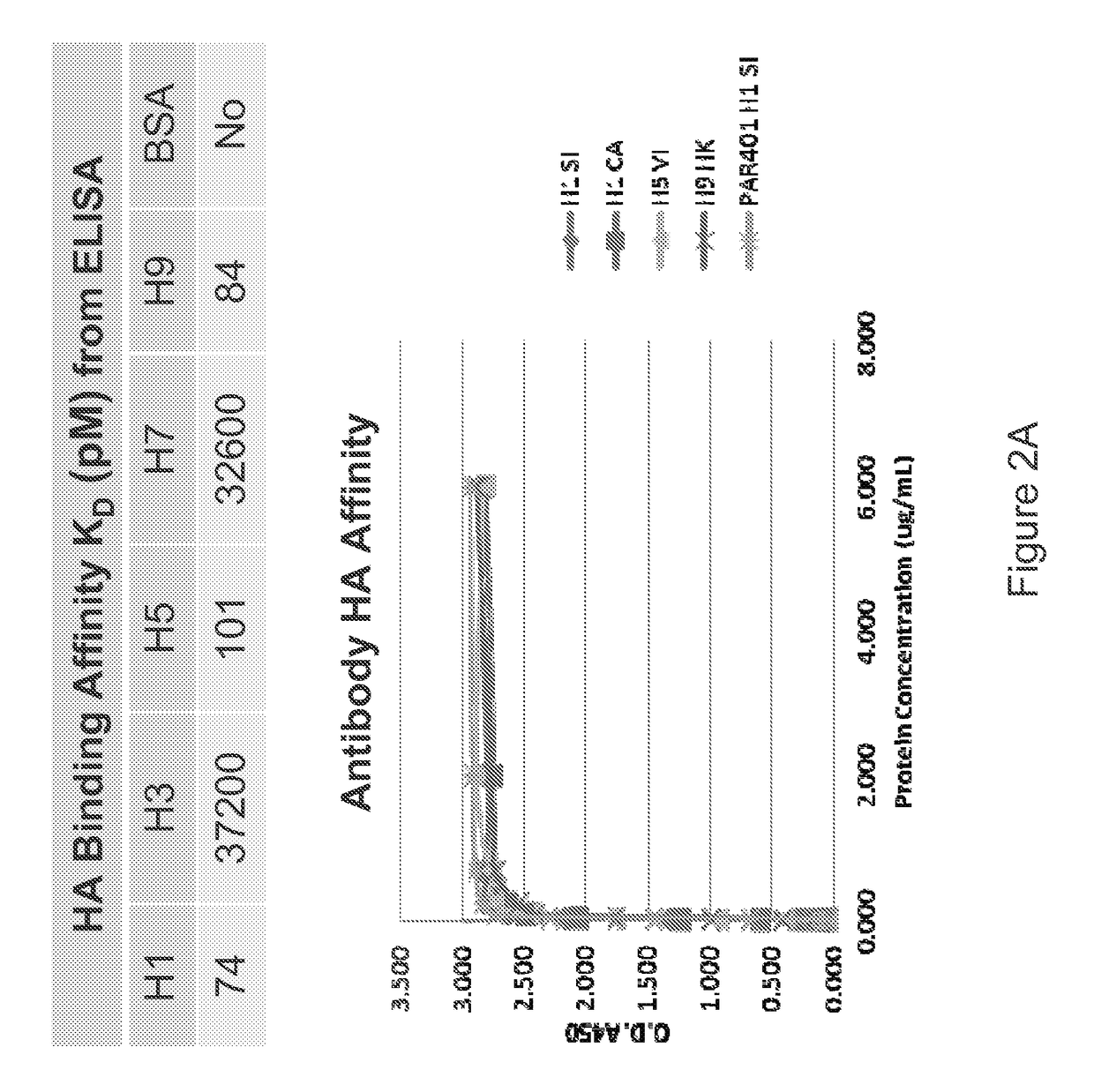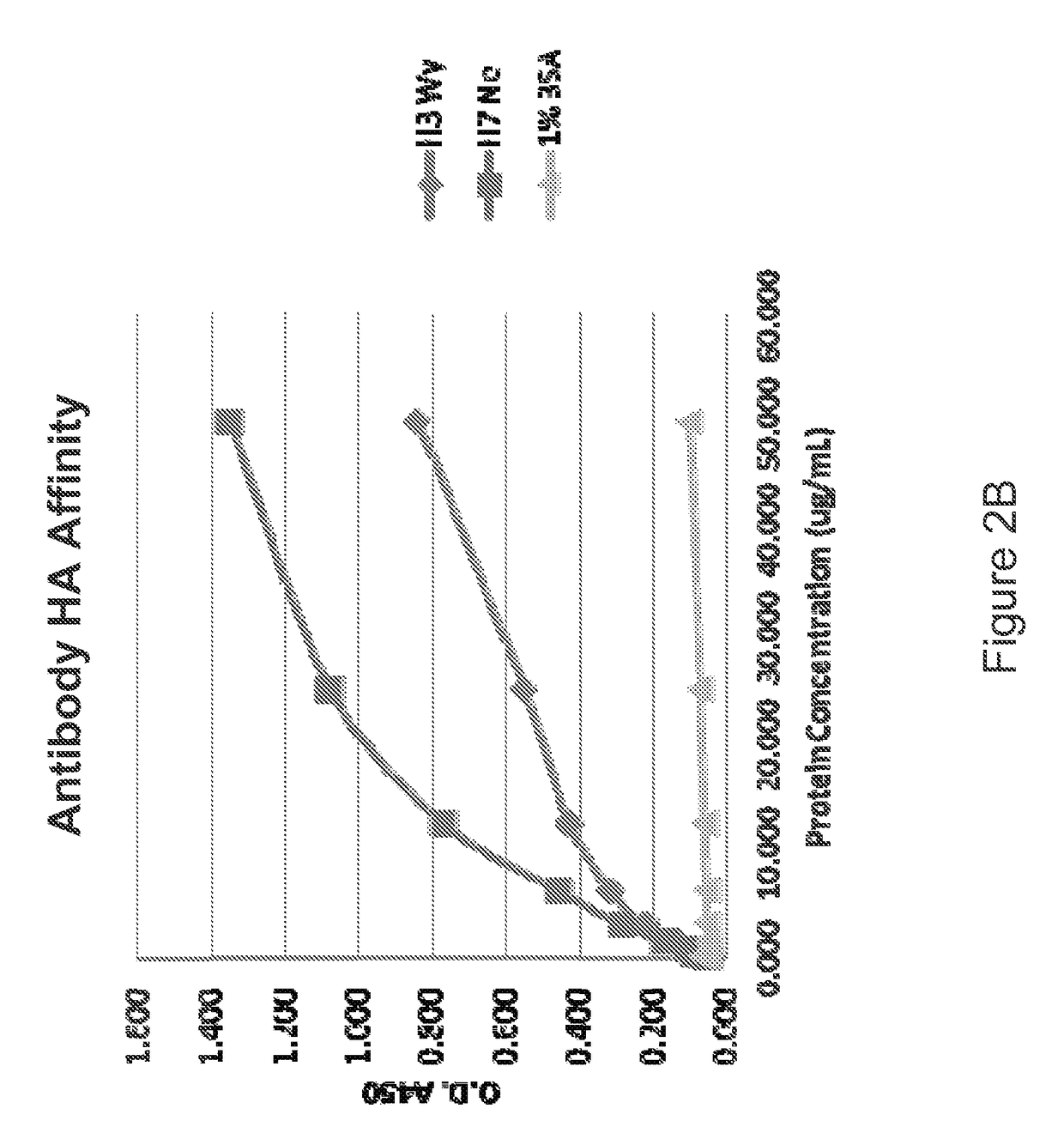Agents for influenza neutralization
a technology of agents and influenza, applied in the field of global health threats, can solve the problems of 300,000 deaths annually, and achieve the effects of rapid breathing, increased heart rate, and high blood pressur
- Summary
- Abstract
- Description
- Claims
- Application Information
AI Technical Summary
Benefits of technology
Problems solved by technology
Method used
Image
Examples
example 1
ation and Characterization of Influenza Antibodies
[0250]The present Example describes production and / or testing of various antibodies provided in accordance with the present invention.
[0251]Anti-HA monoclonal antibodies were generated and framework (FR) sequences were determined. Table 2 depicts exemplary amino acid sequences of VH domains of anti-HA antibodies. Table 3 depicts exemplary amino acid sequences of VL domains of anti-HA antibodies. Complementarity Determining Regions (CDRs) of each of the heavy and light chains are depicted in bold and listed in CDR1, CDR2, and CDR3 columns in the Tables 2 and 3.
[0252]An exemplary antibody was characterized for binding to HA from different subtypes of influenza. Sequences of the exemplary antibody framework and complement determining regions are indicated in Table 4 below. The exemplary antibody binds to both group 1 and group 2 subtypes of HA with differential binding affinity.
[0253]
TABLE 4Amino Acid Sequence of VH and VL Chains of Exe...
example 2
ffinity Between an Exemplary Influenza Antibody and the Targets of the Influenza Antibody
[0256]The present example shows a calculation of binding affinity, as represented as an equilibrium dissociation constant (KD), between an example influenza antibody and the target of the antibody. In this example, the antibody is an antibody of Example 1 and the targets of the antibody are HA polypeptide from different influenza strains.
[0257]Binding affinity between the exemplary antibody and an HA polypeptide is a function of the concentrations of both the antibody and the HA polypeptide. In the present example, the binding affinity is quantitatively described using equilibrium dissociation rate constant (KD). An example of how to measure the dissociation constant is described below.
[0258]HA polypeptide coated plates were used to perform ELISA assays with an exemplary antibody as described previously. The measured absorbance at 450 nm was used to calculate the fractional saturation of the rec...
example 3
ate Evaluation of an Influenza Antibody
[0261]The present example illustrates the ability of an exemplary influenza antibody to reduce virus infectivity in an in vitro binding assays. The present example shows an alternative method for calculating binding affinity, as represented as an association rate constant (ka), dissociation rate constant (kd), and equilibrium dissociation constant KD between an example influenza antibody and the target of the antibody. In this example, the antibody is an antibody of Example 1 and the targets of the antibody are HA polypeptide from different influenza strains.
[0262]Binding affinity between the exemplary antibody and an HA polypeptide is a function of the concentrations of both the antibody and the HA polypeptide. In the present example, binding affinity is quantitatively described using association constant (ka), dissociation constant (kd) and equilibrium constant (KD). An example of how to measure and calculate these constants is described belo...
PUM
| Property | Measurement | Unit |
|---|---|---|
| real time PCR | aaaaa | aaaaa |
| time | aaaaa | aaaaa |
| time | aaaaa | aaaaa |
Abstract
Description
Claims
Application Information
 Login to View More
Login to View More - R&D
- Intellectual Property
- Life Sciences
- Materials
- Tech Scout
- Unparalleled Data Quality
- Higher Quality Content
- 60% Fewer Hallucinations
Browse by: Latest US Patents, China's latest patents, Technical Efficacy Thesaurus, Application Domain, Technology Topic, Popular Technical Reports.
© 2025 PatSnap. All rights reserved.Legal|Privacy policy|Modern Slavery Act Transparency Statement|Sitemap|About US| Contact US: help@patsnap.com



